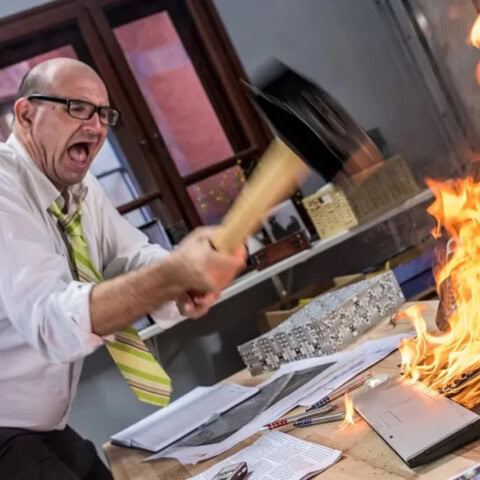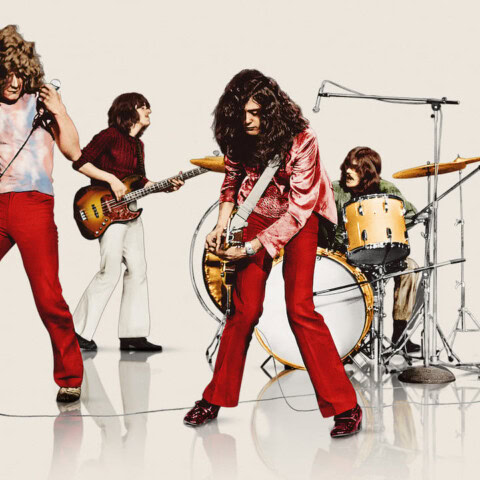Witchdoctor Rating
-
- 7/107/10
Summary
McLaren is anything but just another film about a car-racing driver, writes ANDREW JOHNSTONE
 By the mid-1950s New Zealand was 20 years into a project to diversify from a commodity agricultural producer into an industrial manufacturer, and among the tools various governments had been using to foster local manufacturing was import restrictions.
By the mid-1950s New Zealand was 20 years into a project to diversify from a commodity agricultural producer into an industrial manufacturer, and among the tools various governments had been using to foster local manufacturing was import restrictions.
The plan was to give the local manufacturer a leg up while capping the flow of precious money out of the country in aid of the balance of payments, but it did make it hard for people to buy cars, an item we were never going to be able to manufacture competitively because of our small population.
Mostly the cars were British and expensive. You had to register, put your name on a list and wait your turn to get one, and if you had no money for a new car you pretty much had to suffer the same indignity for a second-hand model.
Cars were valuable, even old dungers, and kids so inclined would buy them, fix ‘em up and have a little fun. Besides, there wasn’t a heck of a lot else to do in far off and isolated NZ, and we had sparse public transport and huge distances between anywhere, so cars were necessary as well as entertaining.
 These kids could barely afford decrepit old cars lets alone expensive spare parts, so they made do. They learned to cut and craft and cast. The best of them could modify cars and rebuild engines. Bruce McLaren (born 1937) was one of these.
These kids could barely afford decrepit old cars lets alone expensive spare parts, so they made do. They learned to cut and craft and cast. The best of them could modify cars and rebuild engines. Bruce McLaren (born 1937) was one of these.
Son of Auckland petrol station/garage proprietors, Bruce McLaren was a self-taught mechanic and engineer and like his father, and had a gift for car racing. He started serious competitive racing when he was 14 and by age 20 had been recruited by the Cooper Racing Team in Britain. In 1959 he won his first Formula One title, the US Grand Prix, and in 1963 he founded his own team.
With few resources and a demanding schedule he called back home and invited his mates to join him, and by the end of the 1960s a bunch of Kiwi amateurs were building cars and running one of the most successful racing teams in the world. The statistics are compelling: Eight constructors world championships and 12 drivers Formula One world championships, 56 wins on the defunct CanAm (Canadian/American) circuit, and three Victories at the Indianapolis 500 and a Le Mans 24 Hour trophy.
Team McLaren were bold innovators and where they went everyone followed. As for McLaren, he was an international jet-setting superstar, as were fellow Kiwi drivers Denny Hulme and Chris Amon, who started their considerable careers under McLaren’s patronage. McLaren, Hulme and Amon were to 1960s NZ as America’s Cup Yachting was to the 1990s (Sir Peter Blake), 1500 metre running to the 1970s (John Walker) and equestrian riding to the 1980s (Mark Todd). One of those odd quirks where for a time, one person’s vision became a nation’s obsession and pride.
 McLaren is one of the great Kiwi success stories and yes, we did finally get to manufacture our own cars (after a fashion). The homemade Trekka failed to take off, but the McLaren brand is still going strong. With a turnover of around half a billion dollars a year on 1649 units, a new McLaren costs upwards of $200,000 and a classic model can be worth millions.
McLaren is one of the great Kiwi success stories and yes, we did finally get to manufacture our own cars (after a fashion). The homemade Trekka failed to take off, but the McLaren brand is still going strong. With a turnover of around half a billion dollars a year on 1649 units, a new McLaren costs upwards of $200,000 and a classic model can be worth millions.
Comedian Rowan Atkinson’s F1 McLaren supercar – only 64 standard road-going versions were built – sold for £8 million (NZ$17m) in 2015. Chassis number 28 is a car built especially for McLaren Formula One driver Michael Andretti. It sold for eight million dollars in 2014.
While McLaren still bears the name of its Kiwi founder, the distinctive Kiwi logo is long gone and the company has few links back to NZ. As For McLaren, if you don’t already know how his story played out I am not going to spoil it for you – go and see the film.
McLaren is directed by expat Aussie Roger Donaldson who moved to NZ in 1965 and later made iconic Kiwi films Sleeping Dogs (1977) and Smash Palace (1982). Hollywood beckoned and after a decent sort of A-List career, Donaldson returned to NZ in 2005 with Academy Award-winning Welsh actor Anthony Hopkins to make the Burt Munro biopic The World’s Fastest Indian.
 A charming exploration of the life of a Kiwi motorcycle speed legend, Donaldson strikes a similar tone with the solidly constructed McLaren. Weaving together recreations, archival footage and numerous interviews with people who were there, Donaldson’s documentary is a tale of achievement by a man whose leadership qualities were every bit the equal of his racing skills. If you enjoyed the Ritchie McCaw documentary Chasing Great (2016) then McLaren is right up your alley. In many ways the two men are cut from the same cloth.
A charming exploration of the life of a Kiwi motorcycle speed legend, Donaldson strikes a similar tone with the solidly constructed McLaren. Weaving together recreations, archival footage and numerous interviews with people who were there, Donaldson’s documentary is a tale of achievement by a man whose leadership qualities were every bit the equal of his racing skills. If you enjoyed the Ritchie McCaw documentary Chasing Great (2016) then McLaren is right up your alley. In many ways the two men are cut from the same cloth.














